One of the common questions I hear quite a bit is "How do I get rid of all the bullshit wiring on my Evo Sportster"?
It's really not rocket science, especially on earlier ones but it can be intimidating to hack up the bundle of perfectly operating wires just for the sake of getting the bare-bones aesthetic.
For this thread we are using BF Josh's 2002 Sportster "S" model with dual plug heads. Other models and years will vary, but the concept will be the same. If you asked ten people how to do it, you'd probably get twenty answers, this ain't gospel, it's just the way I did it. And it worked, has way less snarl of an unsightly harness, especially now that more of the bike is exposed with a flat bottomed tank, fiberglass tail section, etc.
On Josh's stock bike there were no fancy sensors or other "nanny" switches that needed to be looped or disabled. This may be the case on later model bikes. We ditched the VOES petcock for an old Pingle one, and capped any open vacuum connections on carb or manifold with high quality rubber caps.
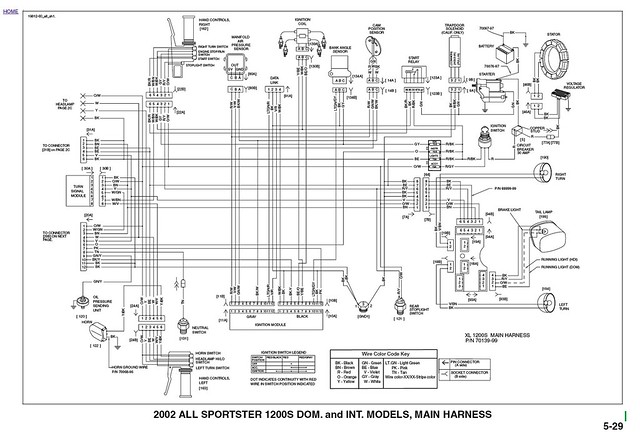
An extremely helpful thing is a factory wiring diagram. I was lucky enough to get one from a guy in PDF form. I blew it up and printed it out onto eight pages, taped them together and hung it on the wall where I was working for reference. Once I thought I was sure about what was going where, I highlighted the wires I was keeping and you can see how many that left for the trash. I did my FXR the same way and a 90's era sporty without one and it was way easier to have a real diagram to reference.
Tools needed:
Test Light
Crimpers / wire cutters
Dialectric Grease
Heat Shrink tubing 3/16" and 1/4" and a little 1/2"
Electric heat gun
Basic hand tools for removing mechanical parts
Butt connectors
Spade connectors
Ring connectors
1,000 Zip Ties
Two-position Toggle Switch
2) 30 amp resettable circuit breakers
1) 15 amp resettable circuit breakers
Blue tape
Sharpie
Note: Remember how I said everyone does things differently? I use circuit breakers and solderless connections. Most people use solder and fuses and the factory uses auto-reset breakers. I don't care for those because I can't tell when one has popped and standing around waiting to see if one resets seems too passive. I wanna know, then I can chase the problem and try to figure out if there is a short somewhere. A lot of old desert racers swear that solder can make the wires brittle and prefer crimped type connectors (and resettable breakers, ever see the dash on an off-road race car?) Anyway, it's worked for me in the past, so why change? On the subject of solderless connections, I use the good ones, with no plastic insulation. I put a little dab of dialectric grease in each one, make sure it is crimped properly and use the smallest heat shrink possible for a tight fit. If you like solder, use it. Same with fuses, but put them somewhere you can get at on the road, not under a tank that takes twenty minutes to pull off. For switches and breakers, try to find the kind with screw-on connections, use your ring connectors in the proper size and put a dab of silicone or liquid electrical tape over the conection once you are sure everything is hooked up in the right place.
Continued...
It's really not rocket science, especially on earlier ones but it can be intimidating to hack up the bundle of perfectly operating wires just for the sake of getting the bare-bones aesthetic.
For this thread we are using BF Josh's 2002 Sportster "S" model with dual plug heads. Other models and years will vary, but the concept will be the same. If you asked ten people how to do it, you'd probably get twenty answers, this ain't gospel, it's just the way I did it. And it worked, has way less snarl of an unsightly harness, especially now that more of the bike is exposed with a flat bottomed tank, fiberglass tail section, etc.
On Josh's stock bike there were no fancy sensors or other "nanny" switches that needed to be looped or disabled. This may be the case on later model bikes. We ditched the VOES petcock for an old Pingle one, and capped any open vacuum connections on carb or manifold with high quality rubber caps.

An extremely helpful thing is a factory wiring diagram. I was lucky enough to get one from a guy in PDF form. I blew it up and printed it out onto eight pages, taped them together and hung it on the wall where I was working for reference. Once I thought I was sure about what was going where, I highlighted the wires I was keeping and you can see how many that left for the trash. I did my FXR the same way and a 90's era sporty without one and it was way easier to have a real diagram to reference.
Tools needed:
Test Light
Crimpers / wire cutters
Dialectric Grease
Heat Shrink tubing 3/16" and 1/4" and a little 1/2"
Electric heat gun
Basic hand tools for removing mechanical parts
Butt connectors
Spade connectors
Ring connectors
1,000 Zip Ties
Two-position Toggle Switch
2) 30 amp resettable circuit breakers
1) 15 amp resettable circuit breakers
Blue tape
Sharpie
Note: Remember how I said everyone does things differently? I use circuit breakers and solderless connections. Most people use solder and fuses and the factory uses auto-reset breakers. I don't care for those because I can't tell when one has popped and standing around waiting to see if one resets seems too passive. I wanna know, then I can chase the problem and try to figure out if there is a short somewhere. A lot of old desert racers swear that solder can make the wires brittle and prefer crimped type connectors (and resettable breakers, ever see the dash on an off-road race car?) Anyway, it's worked for me in the past, so why change? On the subject of solderless connections, I use the good ones, with no plastic insulation. I put a little dab of dialectric grease in each one, make sure it is crimped properly and use the smallest heat shrink possible for a tight fit. If you like solder, use it. Same with fuses, but put them somewhere you can get at on the road, not under a tank that takes twenty minutes to pull off. For switches and breakers, try to find the kind with screw-on connections, use your ring connectors in the proper size and put a dab of silicone or liquid electrical tape over the conection once you are sure everything is hooked up in the right place.
Continued...

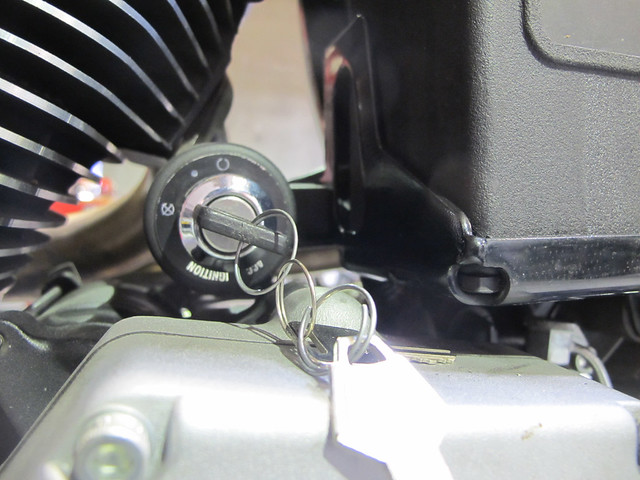
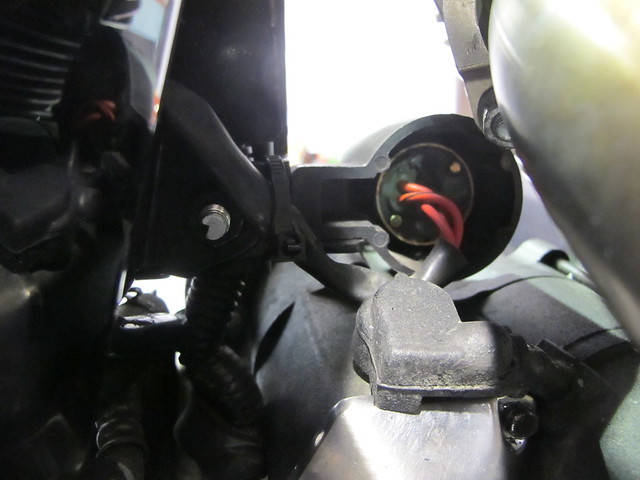
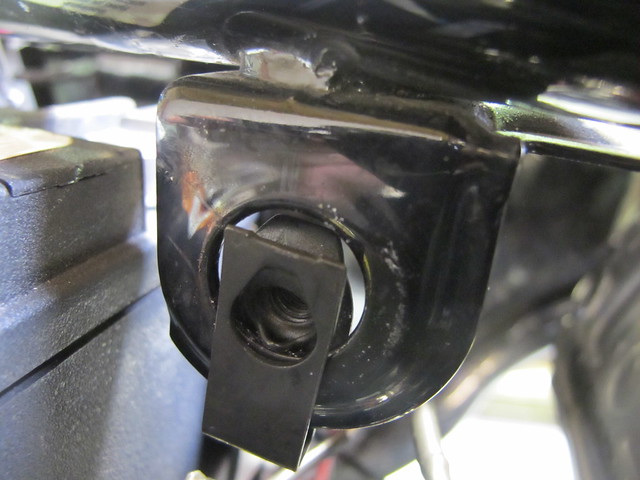
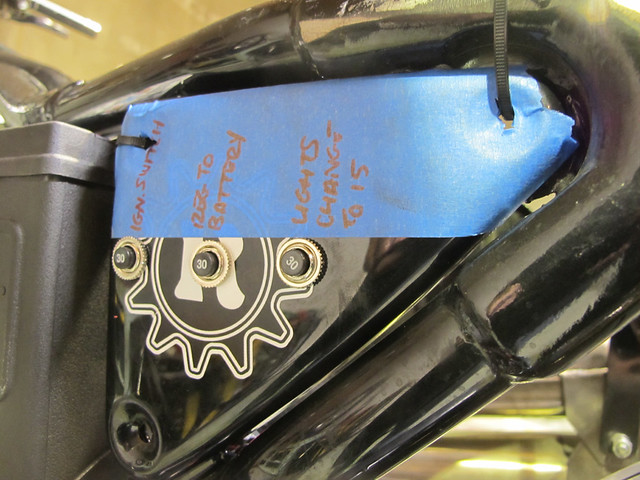


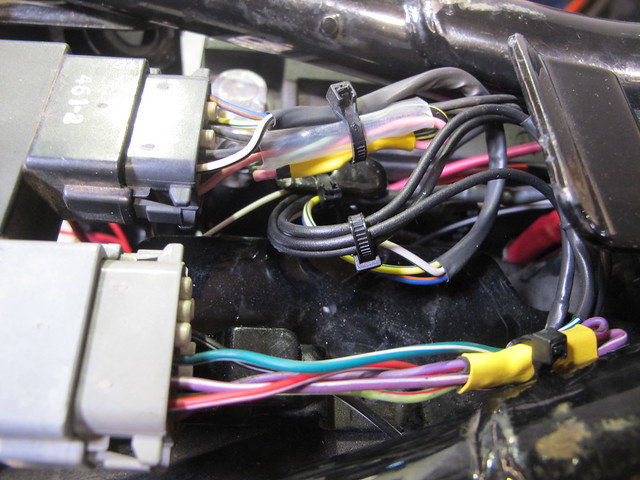

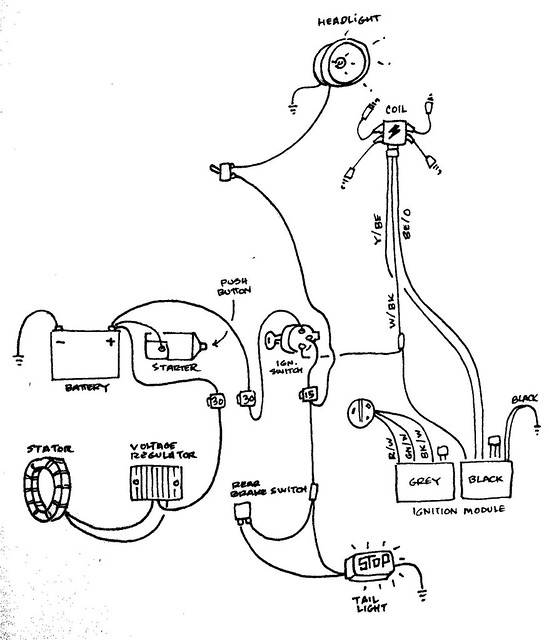
Comment